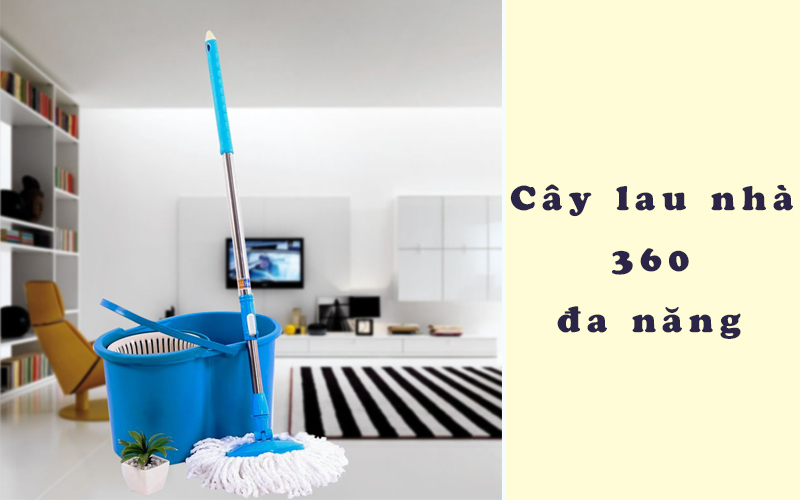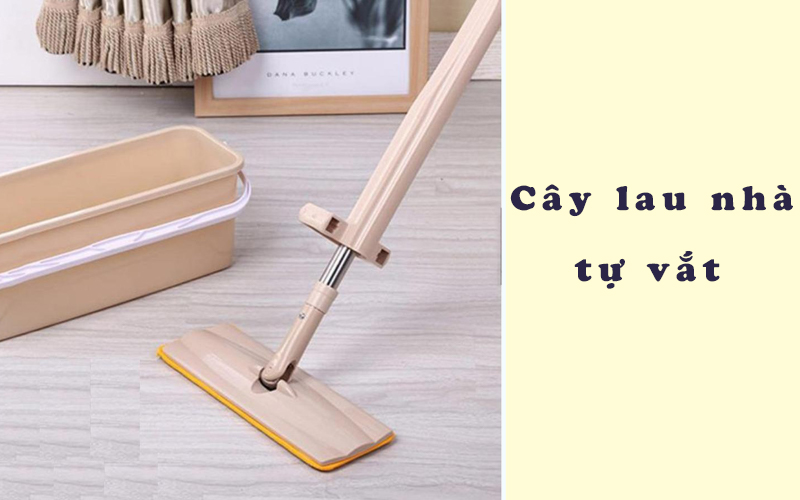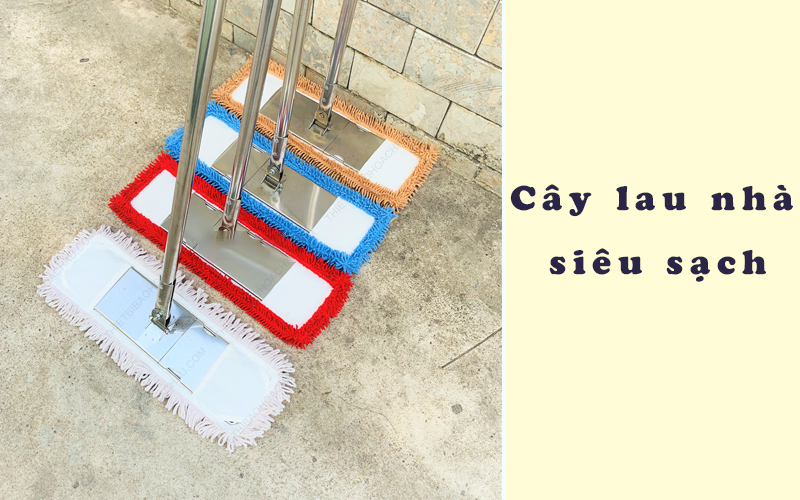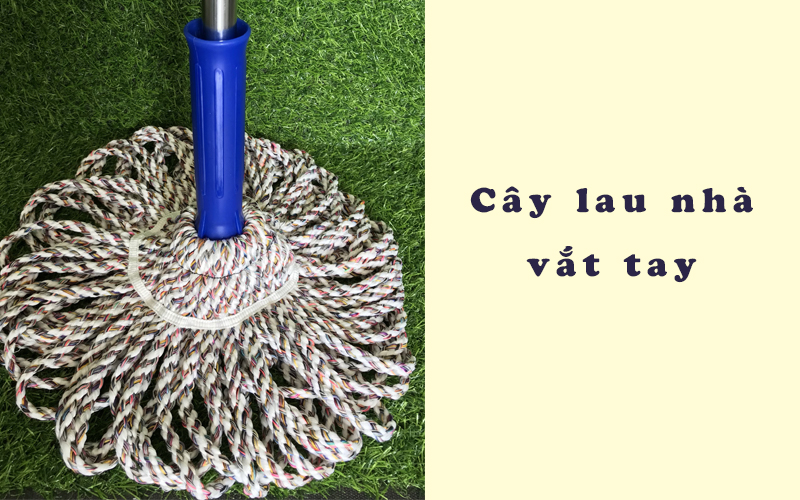There are numerous types of mops available on the market, offering a wide range of designs, colors, materials, and modern features. Owning a suitable mop can help us save time and effort while also ensuring a safe and clean environment for our families. In this article, let’s explore some of the most popular types of mops currently available.
1 360-Degree Multi-Functional Mop

This type of mop features a unique design where the mop head is attached to the handle and can be easily detached and rotated 360 degrees. The handle is typically made of stainless steel with a plastic coating, and it can be adjusted for length or detached as needed.
The water container is usually made of stainless steel or plastic and consists of two parts: a water reservoir and a centrifugal spinning basket for wringing out the mop head.
Advantages:
- The stainless-steel handle is stylish, durable, and rust-resistant.
- The 360-degree rotating mop head allows for easy cleaning in tight spaces. The mop fabric is soft, absorbent, and efficient in cleaning, and it is also quick to wash.
- The container has wheels for easy movement, and the centrifugal spinning basket can be detached for hygiene purposes.
Disadvantages:
- The water container is on the larger side and may take up considerable space.
2 Self-Wringing Mop

Advantages:
The handle of this mop is made of shiny, durable stainless steel and can be detached. It features a twist design with a groove system and an internal spring that provides strong wringing force, allowing you to easily dry the mop head with a gentle twist.
The rectangular-shaped mop head creates a stronger centrifugal force, resulting in more effective cleaning over a larger area. Additionally, the cotton mop head is highly absorbent and can be easily detached.
Disadvantages:
The mop head is relatively thin and small, which may require more time for cleaning and rinsing. Furthermore, the absence of a water container means that you’ll need to spend extra time rinsing the mop head during cleaning.
3 Super Clean Mop

This mop consists of three parts: the handle, the mop head, and the base.
Advantages:
The handle is made of a combination of stainless steel and aluminum, providing sturdiness and adjustability in length from 80 to 145 cm. The base is made of lightweight and durable plastic.
The mop head is crafted from microfiber fabric, which is highly absorbent and capable of rotating 360 degrees, making it easy to clean even the most hard-to-reach areas.
Disadvantages:
The mop head is rather thin and small, which may prolong the cleaning time. Additionally, the absence of a water container means that rinsing the mop during cleaning can be time-consuming.
4 Mop with a Spray Bottle

Advantages:
The handle of this mop is made of high-quality ABS plastic and combined with stainless steel, making it easy to disassemble for repairs if needed.
The compact spray bottle saves time by eliminating the need to repeatedly rinse and wring out the mop head. The spray button is conveniently located on the handle for easy access during use.
The mop head is made of soft, absorbent microfiber fabric.
Disadvantages:
The mop head is still on the thinner side, which may limit the cleaning area. The water container may not be large enough to thoroughly clean the mop head.
5 Hand-Wringing Mop

Advantages:
This mop has a simple and compact design, with a handle that includes a hanging hook for convenient storage. The handle is made of stainless steel, and the grip is coated with plastic to prevent slippage during use.
The mop head is thick and absorbent, and you can twist the mop to wring it out.
Disadvantages:
The length of the handle is fixed and cannot be adjusted during use.
The mop head is made of coarse fabric fibers, which can easily become tangled with hair and debris, reducing its cleaning effectiveness. The thickness of the mop head also makes it challenging to fully wring out or air-dry.
These are the five most common types of mops available on the market today. With the help of these mops, homemakers can effortlessly maintain a clean and refreshing living space.
See also:
>>
>>
>>

































